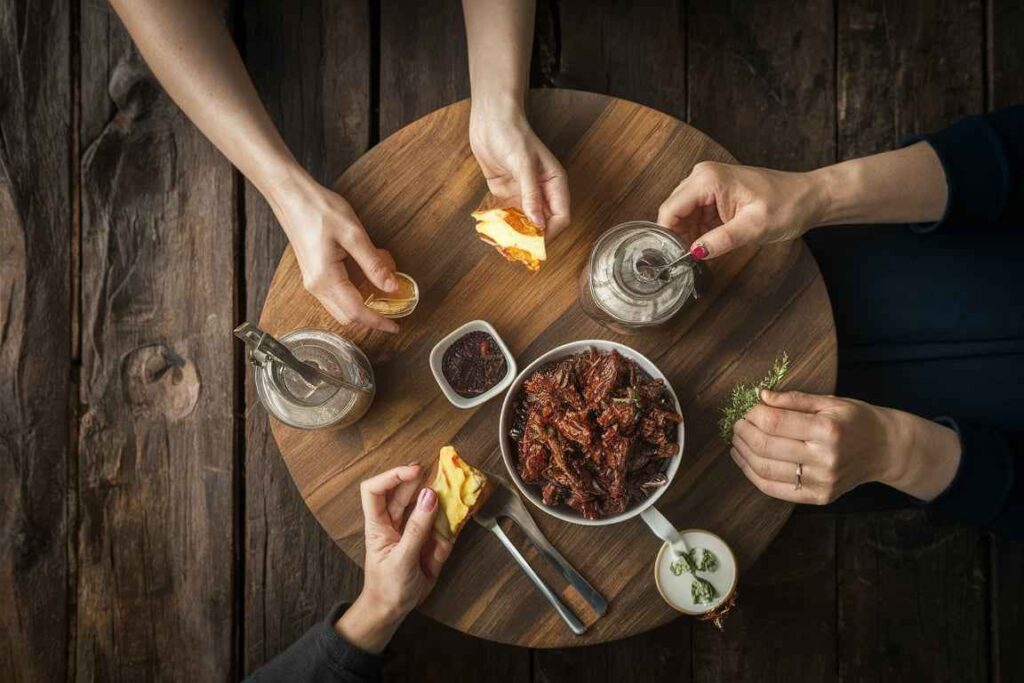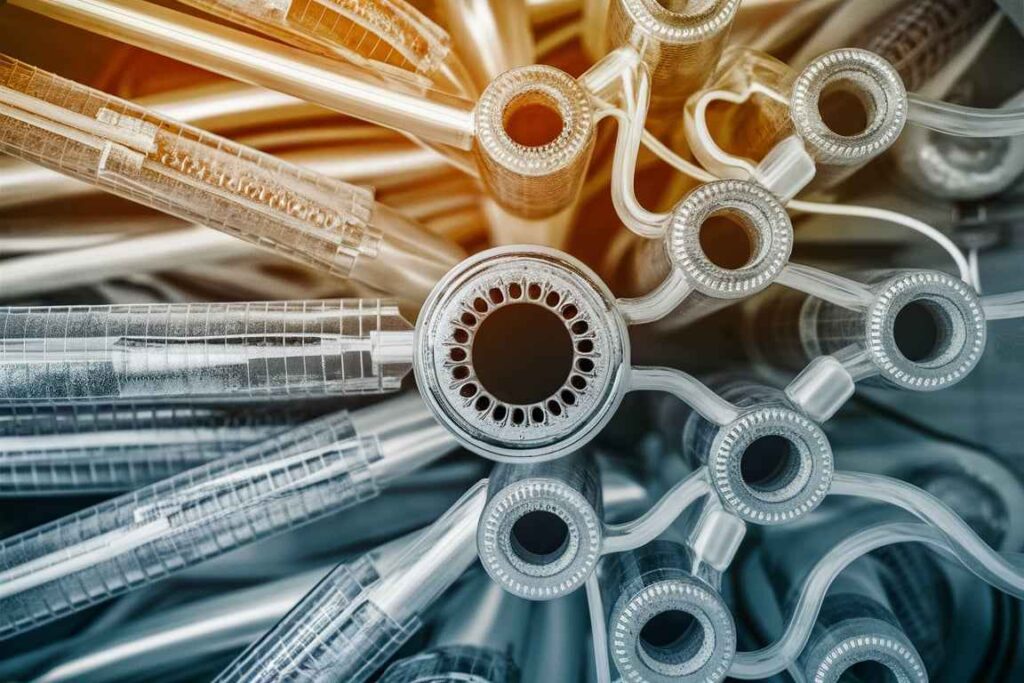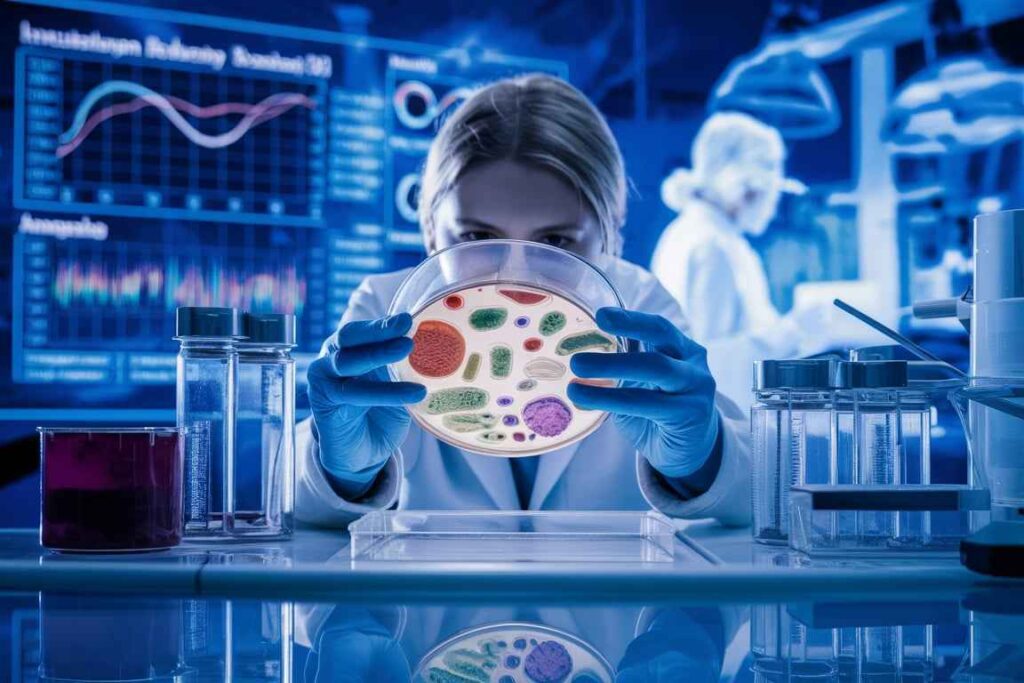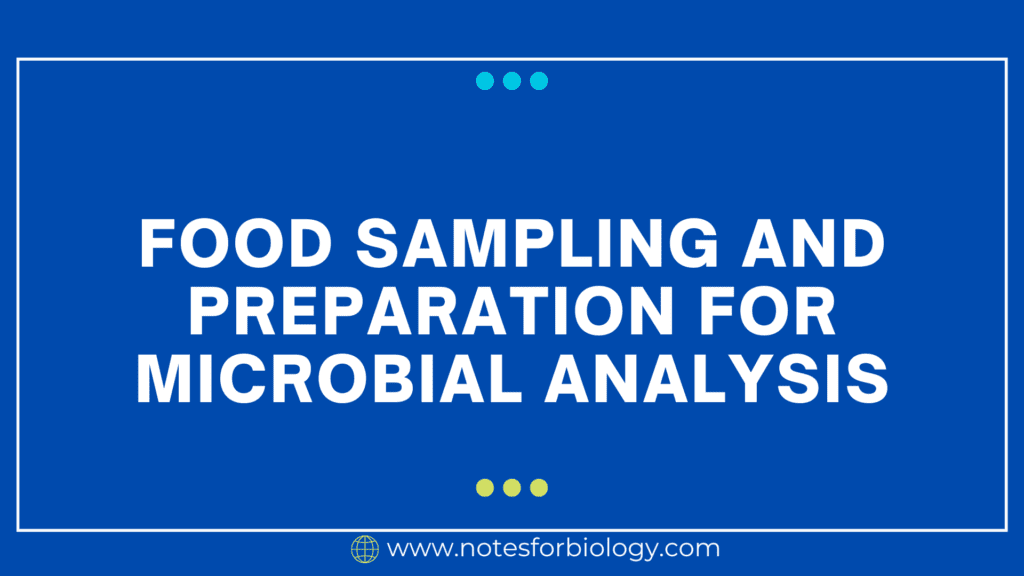Food sampling and preparation for microbial analysis is a critical process in ensuring food safety and quality. Food sampling process involves several steps designed to accurately detect and quantify microbial contamination in food products.
Table of Contents
Food sampling
Food sampling is the process of taking a representative sample from a larger batch of food to assess its microbial content, chemical composition, nutritional value, or presence of contaminants in order to test and analyze its characteristics, particularly those related to food safety, quality, and regulatory compliance. Food sampling process involves several steps designed to accurately detect and quantify microbial contamination in food products.

Sampling
Sampling Plan
Objective: Determine the goal of sampling, such as normal monitoring, epidemic investigation, or regulatory compliance.
Sample Size and Frequency: Determine the quantity of samples and how frequently they should be collected. This is dependent on the type of food, manufacturing volume, and risk level.
Sample Points: Determine important locations in the food production process where samples should be collected (e.g., raw ingredients, final products, equipment surfaces).
Sample collection
Use sterile instruments and containers to prevent contamination. Autoclave or flame alcohol to sterilize knives, spoons, and sample containers.
Techniques: Collect samples using acceptable techniques that avoid adding external contamination. Use a sterile knife or spoon for solid foods, and a sterile pipette or syringe for liquids.
Storage and Transport: Store samples in sterile, leak-proof containers and keep them at appropriate temperatures (usually 4°C) during transport to the laboratory.
Sample preparation
Homogenization: Ensure the sample is typical of the entire batch and bacteria are evenly distributed.
Procedure: Use a sterile blender, stomacher, or mortar & pestle. To promote homogenization, add a sterile diluent (such as buffered peptone water or saline).
Dilution: Obtain a tolerable number of germs to accurately count.
Procedure: Perform serial dilutions by transferring a predetermined amount of the homogenized material to a sterile diluent and thoroughly mixing. Continue this technique until you reach the desired dilution factor.
Microbial Analysis Techniques
Plating methods
- Spread Plate: Place a determined volume of diluted sample on the surface of an agar plate.
- Pour Plate: Combine the diluted sample with molten agar and transfer to a Petri plate
- Streak Plate: Use a loop to streak the sample across the surface of an agar plate for isolation of individual colonies.
Most Probable Number (MPN)
Technique: Use a series of tubes containing broth medium to estimate the number of microorganisms. Inoculate tubes with serial dilutions of the sample and incubate.
Membrane Filtration
Procedure: Filter a known volume of liquid sample through a sterile membrane filter. Place the filter on an agar plate and incubate to allow microbial growth.

Rapid Methods
- PCR (Polymerase Chain Reaction): Detect specific DNA sequences of microorganisms.
- ELISA (Enzyme-Linked Immunosorbent Assay): Detect specific antigens or antibodies related to microorganisms.
- ATP Bioluminescence: Measure the presence of ATP as an indicator of microbial contamination.
Incubation and Enumeration

Incubation Conditions
Temperature and Time: Incubate plates or tubes at specific temperatures (e.g., 37°C for bacteria, 25°C for molds) for a defined period (usually 24-48 hours).
Colony Counting
- Manual Counting: Count colonies on agar plates manually using a colony counter or grid.
- Automated Counting: Use automated colony counters for high throughput.
Identification of microorganisms
Biochemical tests
- Gram staining distinguishes bacteria based on cell wall characteristics.
- Oxidase and catalase tests: Identify bacterial species based on enzyme activity.
- API Strips: Use biochemical panels for precise identification.
Documenting and Reporting
- Record Keeping: Keep thorough records of the sample, preparation, and analytical methods.
- Data Analysis: Interpret the results to determine the level of microbiological contamination and ensure compliance with safety regulations.
- Reporting: Gather and present findings to key stakeholders, including any necessary remedial steps.
Frequently Asked Question
What is Food sampling ?
Food sampling is the process of taking a representative sample from a larger batch of food to assess its microbial content, chemical composition, nutritional value, or presence of contaminants in order to test and analyze its characteristics, particularly those related to food safety, quality, and regulatory compliance.
What are the Identification of microorganisms ?
The Identification of microorganisms are
1. Biochemical tests
2. Documenting and Reporting
Related Article

